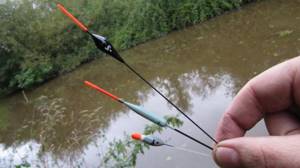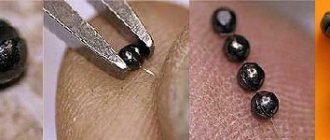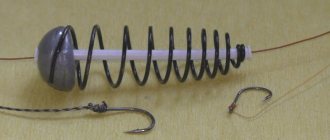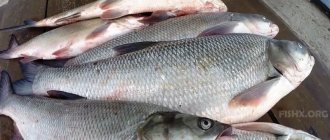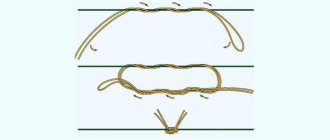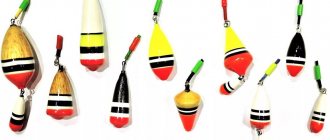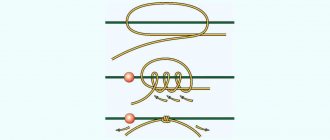You should remember certain features of fishing with a sliding float. For example, it is sometimes attached through a ring on a fishing line or connected using a swivel. In the first case, the main line may overlap with the hooks, and in the other, the type of installation to some extent prevents this phenomenon.
Then, it should not be lowered close to the hooks while casting. This can lead to overlap of the line, after which the cast will be unsuccessful and again you will have to deal with the resulting “beard”. To avoid adverse consequences, it is necessary to place a limiting clamp on top of the upper sinker (approximately 20 cm) to prevent the float from approaching the hooks.
Advantages:
- The loaded float makes it possible to place a small weight on the leash, so that the fish will not feel it when biting.
- It can be thrown under the edge of the reeds, since some types of fish (crucian carp, tench) prefer to be there.
- The ability to cast further and more accurately, since the thrown tackle has one center of gravity;
- Less susceptible to wind drift, risk of drowning the fishing line;
- Possibility of changing the float and loading in one motion;
- Greater sensitivity (unless you take a plug, of course)
- If you attach a large weight, it will be able to hold the bait quite firmly near the bottom.
Flaws:
- It is impossible to catch “hold” because the float begins to sink.
- During windy weather, accuracy and casting range decrease.
Float selection
Main types of sliding floats:
- With a central axial hole for passing fishing line, it has a voluminous body and large load capacity. The advantages include ease of installation and ease of casting.
- With two ears on the body for passing fishing line, it has high sensitivity characteristics and is quite stable when fishing in strong currents. The downside is that the lugs are of poor quality and often fall out of the body or bend when hooked.
- With one eyelet for fastening, they are excellent floats when fishing in still water and for long casting during match fishing. Using an adapter, it is quite easy to remove and change another float. In the first two options, the floats are changed only when the equipment is completely disassembled.
Conventionally, according to their form, they are divided into three types:
Round, used for casting over short distances in calm weather.
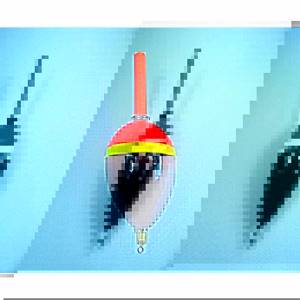
Oval, used for medium distances with small gusts of wind.
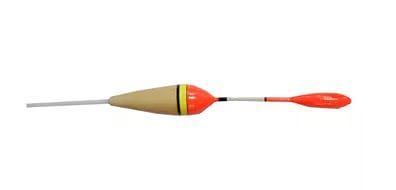
Extended, designed for long casting in very windy weather.

A light float is not suitable because it slides extremely weakly along the fishing line. It cannot withstand such a weight of weight that the line will slide through its eye without obstacles when the bait drops into the water. Smooth thin monofilament fishing lines usually use a weight of up to 5 g. Then the traction will be sufficient.
The bait should drop quickly so that the moment when the stopper touches the eye of the float is clearly visible. A float with a load capacity of 8-12 g will not become very heavy. On the contrary, in deep water when catching large fish (for example, bream), it is more practical.
How sensitive a float is depends not on its size, but mostly on the thickness of the antenna and how far it sticks out of the water.
The required quality is sufficient self-loading. If there is not enough weight at its base, it will not fly in sync with the load when casting.
How to properly load a float onto crucian carp video. Right answers. KakPravilno-Sdelat.ru
When choosing a float for catching crucian carp, first of all, you need to look for a model with good sensitivity.
The float should notify the fisherman about the lightest touches of crucian carp to the bait, and therefore sensitivity plays almost the main role.
It depends on the carrying capacity (as the carrying capacity decreases, the sensitivity increases), the cross-sectional area of the tip and the thickness of the main body of the float.
In general, if you are eager to catch crucian carp, you will need a not too large, vertically elongated float with a thin tip. The last parameter is especially important.
The right float for crucian carp
When trying to make the float as sensitive as possible by using a low load capacity, it is important not to overdo it, since floats that are too light are also not suitable for catching crucian carp. The fishing conditions themselves should be taken into account.
In good, calm weather, use a float with a load capacity of 2-3 g. In case of significant gusts of wind, a model with a load capacity of 5 g or more is suitable, and for long casts with a Bolognese fishing rod, you can grab a float with a load capacity of more than 10 g.
The color of the float is not too important. For the lower part, dark colors will be more appropriate, but choose the color of the top individually for yourself. Just take into account what color the water surface itself is, and use floats of those colors that will be clearly visible to you.
So that you can control the fishing process and clearly see the depth of the float, the tip should have a length of 3 cm.
This way you can make an effective hook at the right time.
The thickness of the tip is also very important. The smaller it is, the better. For example, a float with a top thickness of 2-3 mm would be good. Regarding the fastenings, it is worth saying that a more convenient option is when there is a small ring in the upper part of the float, and the lower part is attached using a rubber cambric.
How to load a float for crucian carp
Choosing a suitable float with good sensitivity, suitable shape and color is not yet a complete “float” preparation for catching crucian carp.
Equally important is the correct loading, which will allow you to use all the advantages of the selected model.
The optimal loading option involves positioning the float on the water in such a way that the entire tip is visible. On the one hand, this will minimize the resistance that the crucian carp may feel when biting, and on the other hand, it will allow the fisherman to clearly see from the float everything that is happening with the bait under water.
While at home, you can carry out the procedure of loading the float using a large plastic bottle or deep basin.
Depending on whether the body of the float is not deep enough or too deep, pellets are added or removed. Excess parts of the weights can be removed using pliers, wire cutters or strong scissors. Remember that the main body of the float must be completely submerged in water.
Floats for fly rods
If, in order to catch crucian carp, you use a fly rod with a rod length of 4-5 m, and fish in the reeds from a boat or shore, then there is no need for heavy floats.
Under normal weather conditions and the absence of noisy neighbors, a small float with a load capacity of up to 2 g would be an excellent solution.
Often fishermen use a light, elongated fixed float, which creates a minimum of circles in the water after casting.
For evening fishing, you can use an attached firefly or even grab a phosphor float model.
Spinning equipment
In this article you will find an excellent overview of eight spinning rigs, such as: Carolina. Texan. drop shot. diverter leash and others.
How to tie a leash. What nodes exist? Which knots are the strongest? You will find all this and much more in the article, click on the picture to go.
What capabilities do echo sounders have?
What are the most important characteristics of a fish finder? What to look for when choosing an echo sounder . Find answers to these questions on the following link.
We make the correct loading of the float for crucian carp
Many people know how to properly load a float, but not everyone knows how to do it for catching crucian carp. Loading a float for crucian carp involves several tricky moments.
If you follow them correctly, then the most sensitive bites will not go unnoticed. The float will give the correct commands for action. There are so many shipping options that a novice fisherman can easily get confused.
For catching crucian carp, classic fishing with the use of a grapple is perfect.
Loading a float for crucian carp - tips
To begin with, after the float is attached to the fishing line, it must be loaded with one or two main weights. This is done with a small margin. The top of the float should stick out of the water a little more than it will when it is finally released. The float is influenced not only by the load, but also by the weight of the bait and the presence of current.
Do not secure the main loads too tightly - they should move along the fishing line. After their installation is completed, it’s time to select a backup shed. The underhang is the small weight located closest to the hook. It is he who does not allow her to float away. So to speak, it anchors the bait.
For undersheathing, choose the lightest weight. Heavy weight can have a negative impact on catching crucian carp. After all, when the fish takes the bait, it can feel the weight and simply spit it out. The floating float should be loaded so that it weighs as little as possible. It is very important.
With this method of loading the float, it is easiest to hunt crucian carp - all its movements are visible. When the crucian carp understands the bait, the float will rise or lie on its side. If the crucian carp tries, the float will twitch.
When the crucian carp takes or leads, the float goes under the water or goes to the side. In any case, the bite will not go unnoticed. It is better to load floats for crucian carp before fishing.
Otherwise, you can lose a lot of time on the pond, thereby reducing your catch.
There is another type of loading a float for crucian carp - a uniform arrangement of small weights throughout the fishing line. In this case, the bait will sink slowly. Sometimes this method of fishing brings results.
However, you should understand that the bite will not be noticeable while the bait is “lowering”. And often the crucian carp will simply knock down the bait. For this reason, you should use a special attachment that will be difficult to remove from the hook.
Various types of mastyrka, pearl barley, and semolina are perfect.
Source: https://kak-sdelatpravilno.ru/pravilnye-otvety/kak-pravilno-otgruzit-poplavok-na-karasja-video.html
Main components of equipment when using a sliding float
How successful fishing will be using a float rod depends on its quality. Using rough and heavy gear, you can quickly get tired and lose interest in the process. The fishing rod must be properly equipped.
Sinkers
Some fishermen use one sinker, without underweight, which is incorrect. Using one weight, the tackle will become vulnerable to snags and impractical when fishing with a retrieve, but it will be useful for fishing in still water. When fishing downstream, the load is placed in descending order.
Loading in such equipment is performed using a similar technology with blind equipment. One has only to take into account that the upper main sinker serves as a lower stopper, since it must be clearly fixed on the fishing line to avoid slipping as much as possible. It is recommended to install a short silicone or rubber tube or bead on top of the main weight. They cushion the float to prevent damage to the fishing line.
There are certain types of loading for sliding floats. The most popular and durable, according to most fishermen, are the usual methods of mounting the component loads - pellets or “olives”.
fishing line
The choice of fishing line for equipment depends on the type of fish and casting distance (they use a heavy float with a large load capacity, so the fishing line is chosen thicker). The leash is always much thinner than the base.
From above, the fishing line is threaded through a wire eye or passed along a channel in the body. A float with an internal channel is most resistant to heavy loads, and therefore they are better suited for strong currents.
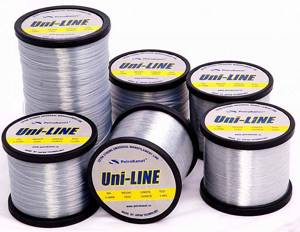
To avoid the appearance of a “beard” during casting, certain rules should be taken into account when equipping gear. For example, the stiffer the main line, the easier it will be for the float to move along it.
The best option would be to use a special fishing line for match fishing with a diameter of 0.18-0.20 mm. The main weight should be located below the float. If everything is followed, then after casting the bait will sink to the bottom faster.
Swivels
A swivel is a small special device that is part of the equipment that prevents the line from twisting. In particular, it is indispensable in fishing with spinning rods and spinners. A large spinner extremely quickly twists the fishing line in such a way that its strength indicators are reduced by almost 30%. During the casting process and its constant winding onto the round spool, involuntary twisting occurs.
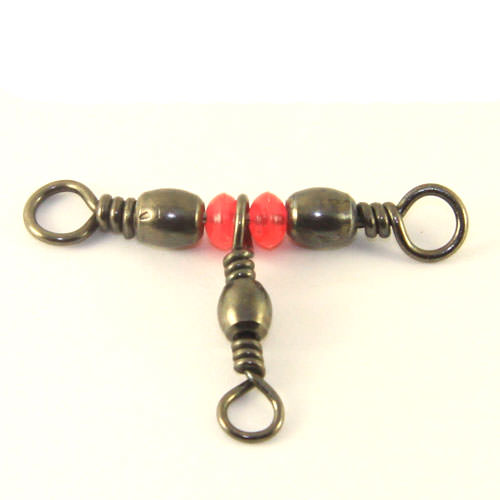
The advantages of a swivel include preventing strong twisting of the fishing line, as well as maintaining its strength. Of course, a completely new swivel will not be able to preserve it, but it will help to significantly reduce the harmful effects of twisting. Carabiners with clasps are extremely convenient for changing baits, and in a spinning bait this is a fairly significant quality, since with a bad bite you need to try a considerable number of baits.
The disadvantages include the fact that a large swivel impairs the performance of the bait, for example, certain wobblers. Therefore, small swivels are predominantly used.
The swivel is tied with the simplest fishing knot: the fishing line is threaded through the eye, which is now in the loop. Then twist it with your fingers several times. Afterwards, the free end of the fishing line is threaded into the loop. The knot is moistened and tightened. If the end of the knot is too long, it is cut off.
Motoviltsa
To wind up the finished equipment, you will need a reel, and for their subsequent fixation, metal hooks with elastic bands. The hook clings to the thin crossbar of the reel, then the fishing line is wound with weights, after which a metal hook with an elastic band is threaded into the upper swivel, securing the tackle. On the side of the reel, with a marker, make a note about all the data on the tackle: line diameter, sinker weight, hook number.

Reel-mounted rigging is preferable because it makes it possible to rig a match fishing rod extremely quickly. Arriving at a pond, often, a fisherman simply threads the fishing line along the ring of the rod, then attaches a float (blind or sliding), and then attaches it to the main fishing line. The length of the rig depends on the minimum fishing depth. Taking this into account, the length of the winding equipment should be at least a meter.
Other components
Other components of the sliding equipment also include stoppers. The main task of the stopper is to fix the float on the fishing line while lowering the equipment.
Taking this into account, the following requirements are put forward to the stopper:
- Free, unhindered sliding along the rod guides.
- Reliable fixation of the depth of descent of the equipment, and at the same time should not be fixed tightly.
- It should sit firmly on the line without slipping or unraveling.
Stoppers come in rubber (silicone is one of the most ancient) and thread stoppers.
The stop knot is not put on the fishing line, but is knitted during the production of the equipment.
It should not slide along it, but at the same time it should be clearly fixed. There is an important requirement for tying these knots: the ends of the knots are not cut very short. The long end slips through the rod much easier.
Installation of equipment
- One or two (depending on the slippage of the float) stoppers are threaded onto the fishing line.
- The float itself is put on.
- Then one stopper is strung in order to limit the movement of the float along the fishing line. This lower stopper is brought close to the upper one.
- Then the weight is installed using replaceable weights so that only the antenna is visible on the surface of the water mass.
- Finally, the end of the main line is connected to the leash and hook.
There are several equipment options:
- Sliding olive rig: most effective in light currents. A sliding “olive” is put on the fishing line itself. A hook is tied at its end, and between them there are 1-2 small locking pellets. Depending on the depth and current indicators, the weight of the olive is determined. It makes it possible to fish in a strong current with a weak bite with long leashes, which is often important.
- Rigging with a “lollipop” type float: it is a balsa disk from which there is a metal keel and a plastic antenna. Such a float is unsuitable for fishing with small holds. If it is used using conventional wiring, its advantages will be reduced to a minimum.
- Equipment for wiring by dragging along the bottom: dictates more stringent conditions. This method is used primarily in deep water. First of all, because the sinker, dragging along the bottom, weakens the speed of the retrieve, and some types of fish (carp) bite on slow-moving bait.
Gear collection in general
Recommendations for choosing gear:
- The choice of line depends on the fish you want to catch and the weather conditions. For example, grayling is caught with a fishing line of 0.20 - 0.30 mm. In shallow water, when fishing with a light lure, use the thinnest line; and in deep-sea reservoirs, a thicker line is required.
- The diameter of the fishing line depends on its quality. It is necessary to remember the rule: the sum of the diameter and height of the throughput ring does not change.
- Rotating spoons are considered the most universal, followed by oscillating and wobblers. It is preferable to have several types of the same brand, varying in weight and color.
- The bait is chosen at the request of the fisherman. The choice of bait weight in a given body of water depends on the depth and other factors (casting distance, casting speed, etc.).
Gear collection:
- A sliding float is attached to the fishing line of the fishing rod. Then, a small bead. After that - a sliding sinker. Next is another bead. The first is necessary so that the float does not break on the sinker, and the second is necessary so that the sinker itself does not damage the assembly.
- A loop is knitted at the end of the main line using a double knot or figure eight. A leash is attached inside the loop (the thickness is 0.1 mm less than the fishing line), which is made from a very thin fishing line. The leash itself reaches up to 20 cm in length.
- All that remains is to install a stopper that prevents the float from moving freely along the line. The most effective and simplest way to do this is to tie a stopper knot. It is compact, easily passes through the rings and carefully stops the movement of the float in the right place.
How to achieve proper immersion
How to ship a fishing float without making mistakes? This question is asked by every novice angler. To do everything without errors, you need to choose the right weight and distribute it on the fishing line so that the information content of the float is maximum. Those for whom fishing is not only a favorite pastime, but also a sport, have long acquired many different floats, which they can change as needed. But picking up cargo directly in nature is very difficult, so it’s better to do this at home. Now there are even special devices that help in selecting weight at home.
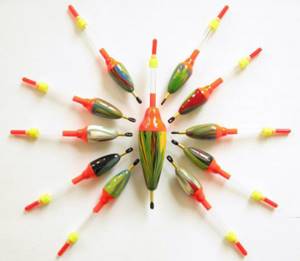
Technique of use
Having completed the assembly, the next important point is casting. You should not make sudden movements, try to give the line uniform and continuous acceleration. If the cast is made correctly, the float will fly forward and drag the rig along with it in tension.
Do not forget about slowing down the flight of the equipment. If you fuss, the risk that the float and weight may become tangled will increase. If fishing is carried out using a match rod, then you need to control the line coming off the spool while casting. For these purposes, before the rig falls on the water, you need to touch the edge of the spool with your finger and slow down its flight so that it straightens. Then the edge of the rod is lowered into the water.
During calm, windless weather, you should wait until the tackle is completely immersed in the water. If the wind blows to the side, then the line should be submerged so that it passes through the float without obstacles. The fishing process itself is not fundamentally different from fishing with a fixed float. Certain difficulties can arise only with measuring the depth.
If the weather is calm and there is no current, then measurements can be taken using assembled match equipment. The required depth at which the weight will lie on the bottom is achieved when the antenna is on the surface of the water. You should also remember an important rule: do not tighten the stopper until the depth has been completely measured. Otherwise, in the process of moving the knot there is a possibility of damage to the fishing line.
It is necessary not to lose sight of the casting distance. To determine the constant value of this characteristic, it is worth putting marks on the fishing line using a waterproof felt-tip pen.
Float mount
The float is attached to the fishing line at one or several points. The difference lies in the specific requirements for the selected tackle, since the nature of the attachment radically changes its behavior when fishing.
- Single point fastening. It is the most popular mounting method, which makes it possible to maintain a high level of sensitivity of the float. This model easily changes its position, easily deviating to the sides. This fastening makes working with it easier, it is easier to remove it from the water, and the risk of the float getting tangled in thickets is reduced.
- Two-point fastening. More reliable when fishing is a float, which is attached to the fishing line at two points. It maintains a stationary working position both during casting and splashdown, and when retrieving and playing with the nozzle. The placement of the float on the fishing line can be deaf and sliding.
- A fixed mount does not mean that it is immovable. The float can be moved along the line, setting the required hook depth. This type of movement is achieved by moving stoppers or beads that restrain its movement. This is the most popular way to place a float.
- The sliding mount allows the float to move freely along the fishing line. Often this movement is limited by stoppers, which are installed in the required positions before fishing. It is used much less frequently than others, mainly on long-casting rods.
Adjusting the fishing float. The sinker must be very heavy in order to quickly deliver the bait to the required place and set the correct position of the float with its weight. It is immersed in water up to the waterline. It should be very small and extremely inconspicuous so as not to scare away the fish with its size and weight.
Features of loading a float for long casting
When casting long distances, the line should be much longer than the fishing rod.
Long casting requires the presence of special floats, for example, glass-shaped to increase aerodynamics and with a center of gravity slightly shifted down. It is precisely these products that will prevent tangling of gear; immersion of fishing line and load in water will be uniform in full.
The antenna must also be long, at least 40 cm, so that it is clearly visible when reproducing long-distance casting.
Blitz tips
- For any type of fish it is worth using your own sliding bobber.
- A sliding float, like other conventional types of floats, must be loaded.
- The sinker should weigh more than 3 g, and optimally more than 4-5 g, since it will be easier to cast when the float is more than twice as heavy as the weight on the line.
- In order to avoid the appearance of a “beard” during casting, it is necessary to remember certain requirements when equipping. In particular, the stiffer the main line, the easier the float will slide along it.
- Do not fully tighten the locking knot until the depth has been completely measured. Otherwise there is a risk of damage to the fishing line.
- When casting, you should not make sudden movements; you should try to give the line uniform and continuous acceleration.
- If the fishing spot is located at a distance of no further than 20 m and a sinker weighing 4-6 g is enough for casting, then preference should be given to a sliding float without additional weight.
- The use of a sliding float introduces a certain passivity into the rig, thereby weakening the hook. To avoid this, you should make more sweeping movements of the rod when hooking. If the float is weighted, then it is more advisable to use a peacock feather antenna, as well as a small stainless steel keel.
- A correctly executed hook is a precise and careful upward movement of the fishing rod until resistance from the fish is felt.
What kind of device
How to properly ship a float at home? For this purpose, a special device has been invented that allows you to select weights and pellets without the troublesome clinging of weights to a fishing line. If you use a large number of pellets, then such a device will become an indispensable assistant for you. In general, pay more attention to various things that can make your life easier and help you save some time.
